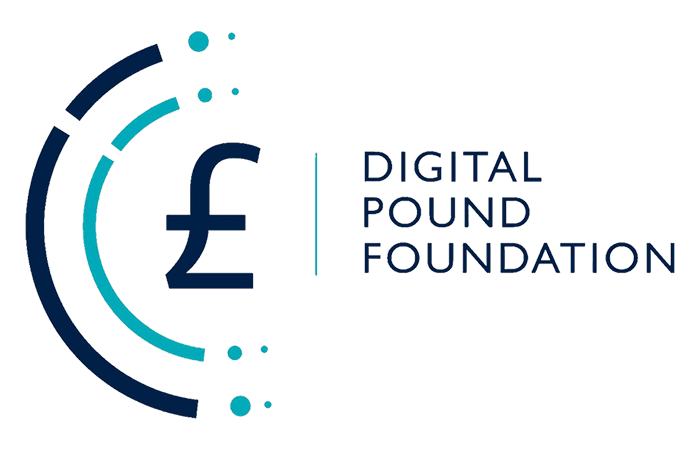Written by Claire Conby, Operations and Governance Lead at the Digital Pound Foundation. Originally published in February 2023 by Central Bank Payments News
With over 90% of the world’s major central banks pursuing central bank digital currency (CBDC) projects, there is an ever-increasing number of institutions and organisations across the globe expressing opinions, recommendations and insights into the benefits (or not) that a new form of digital money could bring. They are currently looking into the technology that could (or should) be used and how a new payments architecture could work effectively, compliantly, and most importantly, without detriment to society.
Delving into the details, the topics that raise their heads are quite diverse, but nonetheless are generally consistent across jurisdictions. Ranging from privacy concerns to financial inclusion and accessibility to fungibility and interoperability, there is a whole variety of themes requiring exploration and analysis.
User Confidence as an Enabler of Success
There is no doubt that for any new form of digital money — whether a CBDC or other privately issued digital currency — to succeed and achieve longevity, it needs to be thought through carefully. To ensure success and instil user confidence, a CBDC or any other new form of digital money must be sufficiently well-designed, and the benefits must be apparent not only to the financial system, but to society as a whole.
Role of DPF
This is exactly where the Digital Pound Foundation (DPF) in the UK can play a significant role. The DPF is a non-profit organisation that advocates for a well-designed digital pound, enabling both public and private sectors to fully engage in the design, development, and adoption of a digital Pound, thus contributing to its successful roll-out and helping drive forward the UK’s transition to a digital economy.
Through its member cohort and partnerships with industry associations such as the Payments Association, UK Finance, City of London Corporation and TheCityUK (these five organisations recently formed the UK Forum for Digital Currencies), the DPF is able to draw on a variety of expertise, insights and experience in order to conduct research, advocacy, exploratory projects and multi-stakeholder collaboration.

Extending beyond the UK, and recognising that many of the challenges are shared across jurisdictions, the DPF also enjoys engagement and knowledge sharing with the Digital Euro Association and the Digital Dollar Project.
Member and Partner Community
Credibility and reputation are fundamental to the success of the DPF. To that end, the DPF has taken a slow and steady approach to membership to ensure true alignment of vision and objectives across its community of members. It is essential that the DPF produces top-quality output and solution-suggesting thought leadership.
With an extremely strong webinar and social media following, including over 30,000 followers on Twitter, the DPF has to get its output right to achieve the desired impact.
Current members include Accenture, AvaLabs, Billon, CGI, Clifford Chance, Electroneum, Modulr, Ripple and Quant, with HSF, CryptoUK and The Realization Group as partners.

There is Plenty to Do
The CBDC space is a really exciting place to be, and the DPF feels like it was created at just the right time. Since officially launching in October 2021, the DPF has been extremely busy and produced a variety of thought leadership papers, consultation responses, webinars, private roundtable discussions and podcasts — and there is still plenty more to come! The work of the DPF can be found here.
What Next?
In many ways, this is just the beginning. With the Bank of England still at the exploratory phase in terms of deciding whether or not to implement a UK CBDC — noting that the recent consultation paper described the need for one as ‘likely,’ which indicates a serious intent at least to continue and possibly further ramp up exploratory activities in this space — there are still many unknowns, a selection of which are presented on the following page.
- How can an acceptable balance between privacy and anonymity be achieved?
- What technological solutions are there that could enable cross-border transactions?
- To what extent can financial and digital exclusion be addressed in order to improve accessibility to financial services (including offline)?
- What are the compelling use cases that demonstrate the benefits that a CBDC could bring?
- How can interoperability and fungibility be achieved?
- What are the implications for traditional payment rails and would they need to be adapted to accommodate these new forms of digital money?
- How is the regulatory landscape changing and what are the implications of this for the features and characteristics of a digital Pound?
Whether or not the Bank of England does decide to implement a UK CBDC, there is no doubt that other new forms of digital money are evolving. This is one of the reasons why the DPF includes within its scope not only CBDCs but other new forms of digital money too.
To be clear, the DPF is not focusing on crypto. Alongside CBDCs, other privately issued forms of digital money such as stablecoins and tokenised fiat cash are being explored. The DPF believes that new technologies enable the realisation of innovative payment mechanisms beyond the payment itself that extend to opportunities for programmable money, whether in a central bank or privately issued form. Whatever the form, well-designed features of both the currency and its accompanying infrastructure are paramount, and must include characteristics such as privacy, resilience, security and consumer protection.
This means that irrespective of the outcome of the Bank of England’s decision-making process, the DPF can still add real value as the payments landscape evolves.
A Full and Thorough Approach
Payments, whether retail or wholesale, are the core of the financial services industry. As alluded to earlier, the sheer scope of topics, challenges and considerations to explore in the design of a digital currency, particularly one to be used by the general public, is immense.
With that in mind, the DPF takes a structured approach to its strategy, operations and governance, to ensure a full and thorough approach, and has set itself the following objectives:
- To provide a centre of subject matter expertise in the UK with respect to new forms of digital money, including CBDC and privately issued forms of digital fiat money.
- To foster collaboration using the DPF’s collective knowledge and experience in advocating for and demonstrating the societal impact and benefits to the UK that arise from a variety of new forms of digital money, as well as the benefits for the financial system and infrastructure. This includes the implications for businesses, government and citizens.
- To demonstrate, through research and thought leadership as well as practical experimentation, the potential impacts of new forms of digital money on the UK both domestically and on the global stage.
- To provide a central point of reference for updates and supporting informative material aligned to the different stages of development of new forms of digital money, as well as the journey to adoption. This includes identifying key themes and emerging issues at each stage and working with DPF members, community and the wider ecosystem to advocate for best practices and design choices along the way.
- To develop and recruit corporate members, as well as a community of professional and highly experienced experts and SMEs, in order to analyse complex design choices, implications and issues, develop insightful thought leadership, and explore use cases.
- To communicate DPF work effectively to policymakers, both directly and via the development and cultivation of a network of key partners whose advocacy and policy objectives align with those of the DPF.
- To develop educational materials, thought leadership and resources, and an engaging programme of communications, publications and events, that will support wider understanding of and confidence in potential new forms of digital money, including CBDC, aimed at the full spectrum of affected parties — from public and private sector stakeholders to the general public.
- To extend DPF knowledge and experience beyond the UK, incorporating learnings from other countries’ initiatives, investigations and analysis, building meaningful relationships for discussion and collaboration with peer organisations in other jurisdictions.
Same Page for Stakeholders
The DPF is acutely aware that there are varying levels of understanding and technical knowledge regarding digital currencies among policymakers, financial and non-financial institutions and the general public.
We therefore see education as a core value-adding contribution to the debate that also plays a fundamental role in helping to support the right outcomes. Of particular note is the importance of making sure that we are all using the same terminology and that our understanding is aligned.
With ever-increasing regulatory focus on cryptocurrencies and crypto assets, the DPF endeavours to engage with and support policymakers educationally and, more importantly, raise awareness of challenges that industry participants face as they seek to navigate their own innovation aspirations within the regulatory framework.
Supporting the Bank of England Through the DPF Policy Working Group
Responding to the many policy consultations focusing on these new forms of digital money is one of the key activities of the DPF Policy, Legal and Regulatory Working Group, as supported by external engagement with many other industry associations and think tanks. As would be expected, the DPF pays close attention to the work of the Bank of England, HM Treasury (HMT) and the Financial Conduct Authority (FCA) in this space, and whilst the work of the DPF is largely proactive, it is of course also led by initiatives and priority points to explore as highlighted by these regulatory bodies.

In terms of CBDC explorations, the Bank of England has previously indicated that it is “open-minded” about introducing a UK CBDC; nevertheless, this is subject to direction and enabling legislation from Parliament. Since 2020, the Bank has gradually increased its research and consultation around a retail CBDC. Following its 2020 paper on retail CBDC, the Bank of England issued its discussion paper on new forms of digital money in June 2021.
This discussion paper provided insights into the Bank’s considerations of the role of public and private forms of digital money, the potential prudential regulatory considerations with respect to the latter and the impact that both might have on the banking system, particularly as to the potential outflows of commercial bank money and the associated implications for credit creation. The content fuelled many discussions within the DPF, with our members particularly engaged in developing the response to the Bank. Indeed, the paper helped the DPF to refine and prioritise our most important areas of focus and thought leadership.
In April 2021, the Treasury and Bank of England announced the formation of their joint CBDC taskforce to coordinate the exploration of a UK CBDC. This was followed by the establishment of the Bank of England’s CBDC engagement and technology forums in September 2021, aimed at engaging a range of industry stakeholders to gather strategic input on policy considerations, functional requirements and technological aspects of CBDC. New forms of digital money were firmly on the agenda of both policymakers and the central bank, it seemed, and again the output from the taskforces provided us with great insights into matters requiring further exploration.
The long-overdue HMT / Bank of England consultation paper on CBDCs, published on 7th February 2023, explores, as expected, design options and considerations for a UK retail CBDC. The 116-page paper examines and acknowledges the opportunities and considerations of a digital Pound and encouragingly articulates their judgement that it is likely that a digital Pound will be needed in the future. This is a positive message and further strengthens the advocatory and exploratory work that the DPF can provide in helping to make sure that any new forms of digital money are indeed well thought through, with a real focus on making sure that the new money is safe and can be trusted by and accessible to the general public.
The direction of the Bank’s work has in the meantime taken a more practical and design-oriented bent as well. This is evidenced by the recent Request for Proposal CBDC Proof of Concepts for offline payments and invitations for Expressions of Interest, a joint experimentation between the Bank for International Settlements (BIS) and the Bank of England as part of Project Rosalind. The initiative aims to develop prototypes for an API that would best enable a central bank ledger to interact with private sector service providers to safely provision retail payments (phase 1) and to come up with retail CBDC use cases and demonstrate technological feasibility (phase 2).
It is these initiatives that spur the DPF on further. The active explorations in this space only strengthen the role, potential impact and support that the DPF can bring to the debate. The January launch of a new working group focused on use cases was therefore particularly timely.
Bringing a CBDC to Life
Demonstrating real-world use cases that resonate with the general public and other stakeholders is an essential step towards exploration of how a UK CBDC would work in practice, and also highlights the benefits that a CBDC could bring.
The DPF was therefore extremely excited to launch its Use Case Working Group in January. This is a practical Working Group looking to uncover real-world use cases for a digital Pound that will be valuable to UK citizens. Aware that people need something tangible to discuss and see working in practice, the focus will be on brainstorming and prioritising relevant use cases and ultimately supporting members as they bring the use cases to life through pilots and sandboxes.

Together We are Stronger
Cryptocurrencies have shown us many of the potential features of a digital currency and how new technologies can revolutionise payments, extend capabilities and transform the underlying infrastructure. It makes absolute sense to explore the possibilities within the context of a CBDC and other new forms of digital money that are more generally suitable for the general public. We would be unwise not to — and the potential impact of not exploring these possibilities on the money supply and fiscal policy of the UK strengthens this work even more.
In order to make this happen, and to ensure that any new forms of money are well-designed, it is essential that we collaborate. The broader our pool of expertise and experience and the more varied and engaging our conversations and output, the more effective the DPF will be in realising our objectives and, ultimately, in supporting the UK’s transition to a digital economy.
The DPF therefore welcomes engagement and collaboration with a variety of stakeholders and is also seeking to increase its member and strategic partner community in the coming months.
For further information about membership opportunities, please click here.
























































